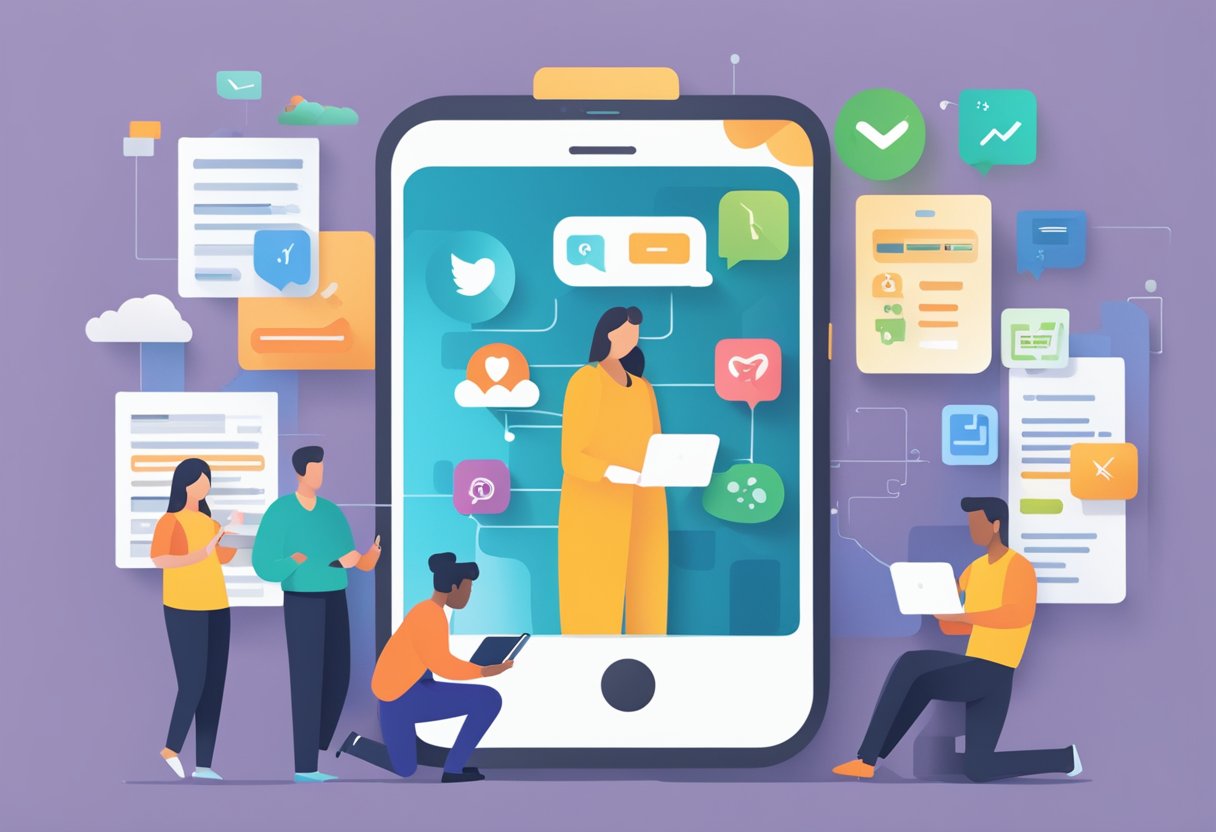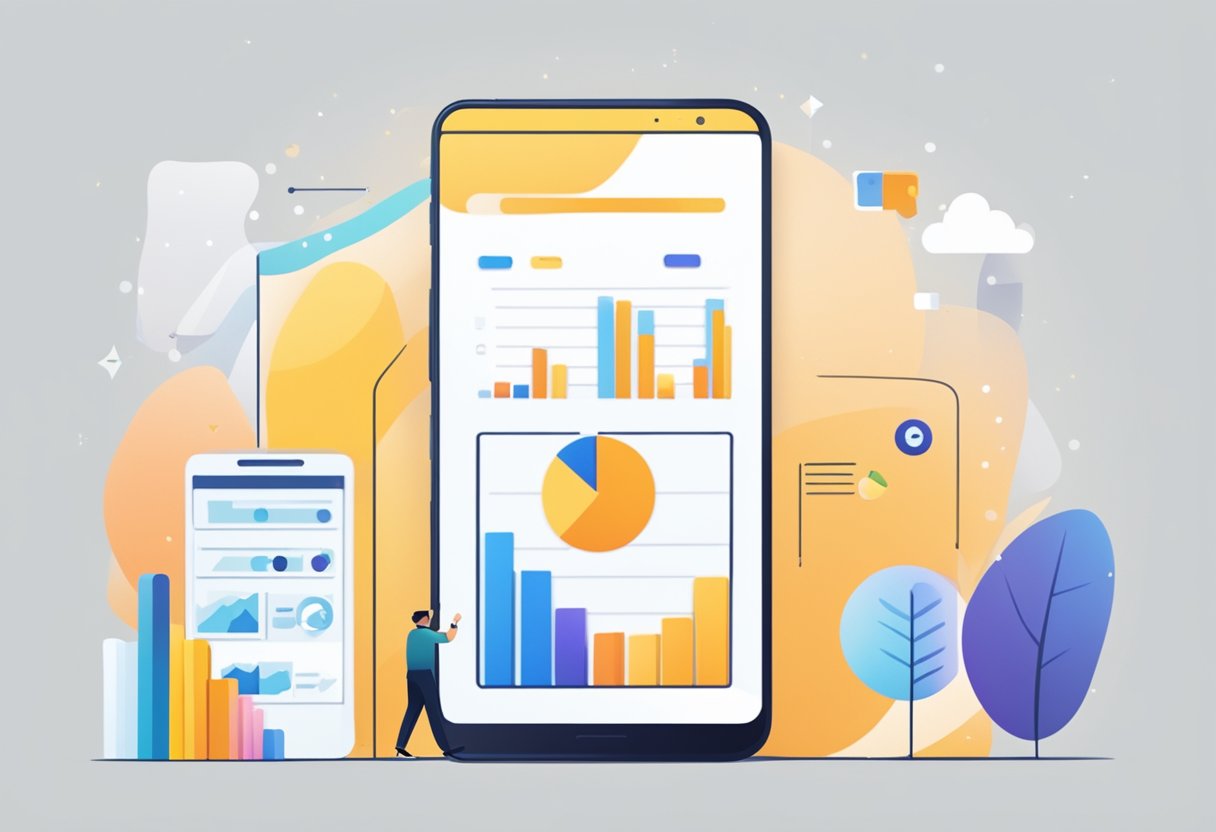Mobile app retention rates are a crucial metric for app developers and marketers, as they measure the percentage of users who continue to use an app after installing it.
High retention rates are essential for the success of mobile apps, as they indicate that users find the app valuable and engaging.
Personalization is a strategy that can have a significant impact on mobile app retention rates, as it allows developers to tailor the user experience to the individual needs and preferences of each user.
Understanding user retention and personalization is key to improving mobile app retention rates.
Personalization can be achieved through various strategies, such as customizing the app’s content, layout, and features based on user behavior and preferences.
By providing users with a personalized experience, developers can increase engagement and create a sense of loyalty, which can lead to higher retention rates.
Strategies for personalizing user experience include using engagement tools such as push notifications, in-app messages, and email marketing.
These tools can be used to deliver personalized content and messages to users, which can increase engagement and retention.
However, it is essential to measure the success of personalization and engagement tools to ensure that they are effective and not causing users to become annoyed or disengaged.
Key Takeaways
- Personalization is a strategy that can have a significant impact on mobile app retention rates.
- Strategies for personalizing user experience include customizing the app’s content, layout, and features based on user behavior and preferences, and using engagement tools such as push notifications and email marketing.
- Measuring the success of personalization and engagement tools is essential to ensure that they are effective and not causing users to become annoyed or disengaged.
Understanding User Retention and Personalization
Defining Retention and Personalization
Retention refers to the ability of a mobile app to retain its users over time. It is a critical metric for any app developer as it determines the long-term success of their app.
Retention is measured by the percentage of users who return to the app after a certain period of time, such as a day, week, or month.
Personalization, on the other hand, is the process of customizing the user experience based on their preferences, behaviors, and other data.
It involves tailoring the app’s content, features, and design to meet the individual needs and preferences of each user.
Personalization can be achieved through various techniques, such as recommendations, notifications, and adaptive interfaces.
Importance of Retention in Mobile Apps
Retention is crucial for the success of any mobile app as it directly impacts the app’s revenue, user base, and overall growth.
A high retention rate indicates that users find the app valuable and engaging, which leads to increased usage and word-of-mouth promotion.
On the other hand, a low retention rate indicates that users are not satisfied with the app and are likely to uninstall it or switch to a competitor.
Moreover, retention is more cost-effective than acquisition as it requires less marketing and advertising efforts.
Retaining existing users is also easier than acquiring new ones as they are already familiar with the app’s features and benefits.
Role of Personalization in Retention
Personalization plays a vital role in improving retention rates as it enhances the user experience and encourages users to return to the app.
By understanding user preferences and behaviors, developers can implement features that cater to their needs and interests.
This could include personalized onboarding processes, content feeds curated to individual tastes, and adaptive user interfaces that evolve based on user feedback.
Personalization also helps to increase user engagement by providing relevant and timely notifications, recommendations, and offers.
This creates a sense of loyalty and trust between the user and the app, which leads to increased retention rates.
Strategies for Personalizing User Experience
Segmentation and Targeting
Segmentation and targeting are essential for personalizing the user experience.
By dividing users into specific groups based on demographics, behavior, and interests, app developers can create targeted campaigns that deliver the right message to the right audience.
This strategy allows developers to personalize the app experience for each user, making them feel more connected to the app and more likely to continue using it.
In-App Personalization Techniques
In-app personalization techniques can be used to customize the user experience based on the user’s behavior and preferences.
These techniques include personalized recommendations, customized content, and tailored notifications.
Personalized recommendations can be based on the user’s search history, purchase history, or other data points.
Customized content can be based on the user’s interests or preferences.
Tailored notifications can be sent to the user at the right time and in the right context, increasing the likelihood of engagement.
Timing and Contextual Relevance
Timing and contextual relevance are critical for personalizing the user experience.
By delivering content and notifications at the right time and in the right context, app developers can increase engagement and retention rates.
For example, sending a push notification to a user at the right time of day can increase the likelihood of the user engaging with the app.
Similarly, providing contextual information based on the user’s location or behavior can increase the relevance of the app experience.
Engagement Tools and Their Impact on Retention

Personalization is key to improving mobile app retention rates. One way to achieve this is by using engagement tools that keep users interested and coming back for more. Here are some of the most effective engagement tools and how they impact retention:
Push Notifications and In-App Messages
Push notifications and in-app messages are powerful tools for keeping users engaged with an app.
By sending personalized messages at the right time, you can encourage users to return to the app and take specific actions.
For example, you could send a push notification reminding users to complete a task they started or offer a special discount on a product they viewed.
By using data on user behavior and preferences, you can make these messages even more effective.
Email and SMS Marketing
Email and SMS marketing are two more tools that can help improve retention rates.
By sending personalized messages to users’ inboxes or phones, you can remind them of the benefits of your app and encourage them to return.
For example, you could send an email highlighting new features or offering a discount on a subscription.
By using data on user behavior and preferences, you can make these messages more relevant and effective.
Personalized Offers and Recommendations
Finally, personalized offers and recommendations are another powerful tool for improving retention rates.
By using data on user behavior and preferences, you can offer discounts or promotions on products or services that are most likely to interest them.
You can also use this data to recommend new products or services that users may not have discovered on their own.
By making these offers and recommendations personalized and relevant, you can keep users engaged and coming back for more.
Measuring the Success of Personalization

Personalization can have a significant impact on mobile app retention rates. However, it is essential to measure the success of personalization to ensure that it is generating the desired results. Here are some ways to measure the effectiveness of personalization in mobile apps:
Analytics and KPIs
One of the most effective ways to measure the success of personalization is through analytics and key performance indicators (KPIs).
By tracking user behavior and engagement, app developers can gain insights into how users are interacting with the app and identify areas for improvement.
Some of the key metrics to track include time spent in the app, number of sessions, and user retention rates.
By setting clear goals and KPIs, app developers can measure the impact of personalization and make data-driven decisions to optimize the user experience.
A/B Testing and User Feedback
Another way to measure the success of personalization is through A/B testing and user feedback.
By testing different versions of the app with different user segments, app developers can determine which personalized features are most effective in improving retention rates.
User feedback is also a valuable tool for measuring the success of personalization.
By soliciting feedback from users, app developers can gain insights into how users are responding to personalized features and identify areas for improvement.
Retention Rate and Churn Analysis
Retention rate and churn analysis are also important metrics for measuring the success of personalization.
Retention rate measures the percentage of users who continue to use the app after a certain period, while churn rate measures the percentage of users who stop using the app.
By analyzing retention and churn rates, app developers can determine whether personalization is having a positive impact on user engagement and retention.
If retention rates are increasing and churn rates are decreasing, it is a good indication that personalization is working effectively.
Challenges and Best Practices in Personalization

Personalization is a powerful tool for enhancing user engagement and retention rates in mobile apps. However, there are several challenges that app developers and marketers must overcome to effectively implement personalization strategies. Below are some of the key challenges and best practices in personalization:
Privacy and Data Security Concerns
One of the biggest challenges in personalization is addressing user concerns around privacy and data security.
Users may be reluctant to share personal information with mobile apps due to concerns around data privacy and security.
To address these concerns, app developers and marketers must be transparent about their data collection and usage policies and ensure that user data is stored securely.
Best practices for addressing privacy and data security concerns include:
- Providing clear and concise privacy policies that explain how user data will be collected, used, and protected.
- Obtaining user consent before collecting any personal information.
- Implementing robust data security measures to protect user data from unauthorized access or theft.
Balancing Customization with User Overload
Another challenge in personalization is finding the right balance between customization and user overload.
While personalized content and recommendations can enhance user engagement, too much personalization can overwhelm users and lead to disengagement.
Best practices for balancing customization with user overload include:
- Providing users with control over their personalization preferences and allowing them to opt-out of personalized content if desired.
- Limiting the amount of personalized content and recommendations presented to users to avoid overwhelming them.
- Using data analytics to track user engagement and adjust personalization strategies as needed.
Continuous Improvement and Adaptation
Finally, personalization is an ongoing process that requires continuous improvement and adaptation.
User preferences and behaviors can change over time, so app developers and marketers must be able to adapt their personalization strategies to keep pace with these changes.
Best practices for continuous improvement and adaptation include:
- Regularly collecting and analyzing user data to identify trends and changes in user behavior.
- Using A/B testing to test different personalization strategies and determine which ones are most effective.
- Staying up-to-date with the latest trends and best practices in personalization to ensure that strategies remain relevant and effective over time.



